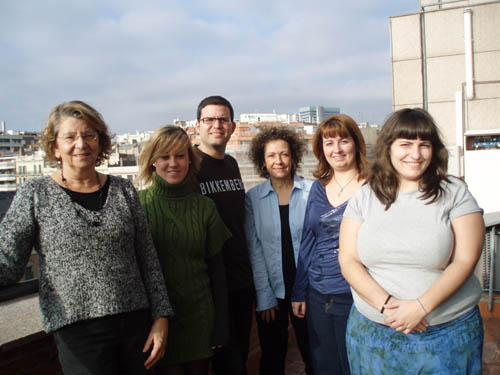It has protective and therapeutic effects on Alzheimer’s disease, improves synaptic function, learning capacity, memory, sensorimotor function, and reduces anxiety, according to the new study led by CSIC scientists
 Voluntary exercise has protective and therapeutic effects on Alzheimer’s disease, improves synaptic function, learning capacity, memory, sensorimotor function, and reduces anxiety, as Coral Sanfeliu et al. report in a new study developed by scientists at the Spanish National Research Council (CSIC), at the Autonomous University of Barcelona, at the Pablo Olavide University in Seville and the University of California, Irvine. The research paper is published in the Journal of Alzheimer’s Disease.
Voluntary exercise has protective and therapeutic effects on Alzheimer’s disease, improves synaptic function, learning capacity, memory, sensorimotor function, and reduces anxiety, as Coral Sanfeliu et al. report in a new study developed by scientists at the Spanish National Research Council (CSIC), at the Autonomous University of Barcelona, at the Pablo Olavide University in Seville and the University of California, Irvine. The research paper is published in the Journal of Alzheimer’s Disease.
The new study is one of the most exhaustive experiments carried out on animals until now, not only for the indicators measured but also for the variety of exercise patterns evaluated, from short to longer periods and starting at different stages of the illness.
“We have seen the best neuroprotective effects in seven- month old rodents, after 6 months of exercise. Mice at this age were already at a moderate pathological stage,” explains Coral Sanfeliu, CSIC researcher at the Instituto de Investigaciones Biomédicas de Barcelona (CSIC-IDIBAPS) and coordinator of the study.
It has been known for some time that exercise increases the production of protective molecules in the brain and has a generally positive effect on physical and cognitive wellbeing. But until now its beneficial effects have not been systematically tested in Alzheimer’s disease.
This study has been carried out on 3xTg-AD transgenic mice that develop an illness similar to that observed in patients with Alzheimer’s disease. The mice were divided into groups. Some mice had free access to the running wheel during a month when they were at an early pathological stage and were evaluated when they were 4 months old. Other groups had access to the running wheel for different periods, either for 1 or 6 months, and were evaluated when they were 7 months old, at a moderate pathological stage. Groups of healthy mice and of transgenic mice with no access to exercise were used as controls.
Animals that were ill with no access to exercise exhibited symptoms of dementia and cognitive loss, as well as impaired synaptic function and long-term potentiation (a long-lasting enhancement in signal transmission which is essential for the learning and memory process). On the contrary, mice that had access to exercise had improved psychomotor functions, memory and learning, reduced anxiety and better startle response.
To evaluate behaviour indicators standard laboratory tools were used such as a water maze with signals, with a path that had to be learned and memorised by mice, and lever-games.
On the other hand, through electrophysiological tests in vivo, scientists have seen that exercise preserves synaptic communication between neurons. José María Delgado, a scientist at Pablo Olavide University involved in the research work explains that “results obtained suggest that physical exercise has benefits on the brain cortex, which implies an improved long-term memory and better complex learning“.
Tissues from brain areas pathologically affected by illness, the cerebral cortex and hippocampus, were analysed. Relevant physiological indicators, such as brain oxidative stress, appeared better in animals that did exercise.
All the data obtained show the importance of voluntary and moderate exercise as a neuroprotective factor. Although these results cannot be easily translated to humans, they suggest that physical exercise and, most likely, intellectual activity, could delay some characteristic symptoms of Alzheimer’s disease and ageing.
This study has been supported by the TV3 Marathon Foundation, a charity of television channel TV3 (Spain), and by the Spanish Ministry of Science and Innovation and the Ministry of Health. It forms part of a wider study on environmental stimulation to Alzheimer’s treatment, which is coordinated by Lydia Giménez-Llort, a scientist at the Autonomous University of Barcelona.
Links:
Physical exercise protects against Alzheimer’s disease in 3xTg-AD mice Yoelvis García, Juan Carlos López-Ramos, Lydia Giménez-Llort, Susana Revilla, Rafael Guerra, Agnès Gruart, Frank M. LaFerla, Rosa Cristòfol, José M Delgado-García, Coral Sanfeliu DOI: 10.3233/JAD-2011-101635
Instituto de Investigaciones Biomédicas de Barcelona (CSIC-IDIBAPS): http://www.iibb.csic.es
Fundación La Marató de TV3 http://www.tv3.cat/marato/es/
